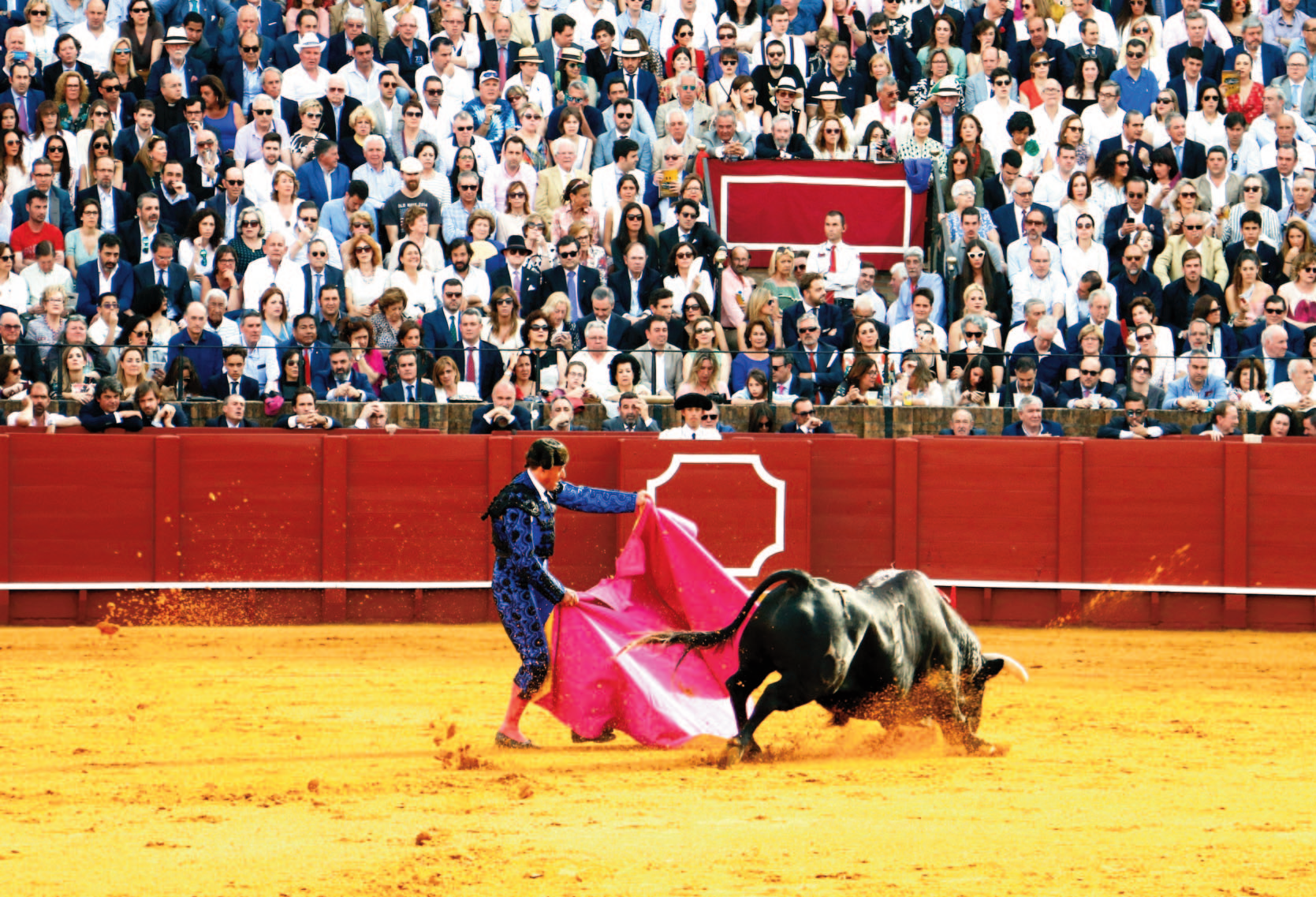Bullfighting comes with rituals, pageantry, and brutality.
Photo by Marko Obrvan/Pexels
By Rick Steves
Packed onto Madrid’s subway jammed with Spaniards heading for Plaza de Toros, I’m wondering how I’ll react to seeing another bullfight –my first in several years. At the last stop, everyone piles out and the escalator pumps us directly up to the looming facade of Madrid’s bullring — the biggest in Spain.
It’s like going to a baseball game, but rather than peanuts and Cracker Jack, it’s pistachios and corn nuts. Bullfights are held on most Sunday evenings, Easter through October. Serious fights with adult matadors are called corridas de toros. These are most expensive and often sell out in advance. But now, in summertime, many fights are novilladas, with cheaper tickets, younger bulls, and teenage novices doing the killing. My ticket is just $10 because tonight’s three bullfighters are novilladas. The man in front of me in the ticket line negotiates aggressively for a good seat. I simply say, “Uno, por favor,” and end up sitting right next to him. The ramshackle band seems to be directed by the cymbal player, who claps a relentless rhythm.
It’s theater in the round and there are no bad seats; paying more gets you closer to the gore. Traditionally, you could buy seats in the shade or, to save money, seats in the sun. Climate change has put an end to that tradition. This summer, with the hottest temperatures in memory, fights begin at 9 p.m. — later than in past years, and it’s all in the shade.
Bullfights are punctual. At 9 o’clock sharp, 500 kilos of angry, disoriented bull charges into the arena. Old men sit attentively, like season ticket holders do — ready for the routine ritual, while girls flutter their fans as if aroused by the prancing men. Many Spanish women consider bullfighting sexy, and swoon at the dashing matadors who are literally dressed to kill in the traditional tight pants (with their partes nobles — noble parts — usually organized to one side, or, as locals like to say, “farthest from the bull”). It’s easy to tell who in the crowd is a Spaniard and who isn’t. With each kill, while tourists take photos, local men croak “Ole!” like old goats, and Spanish women wave their white hankies.
In Spain, the standard bullfight consists of six bulls (two per matador) — that’s two hours of medieval man-versus-beast madness. Each ritual killing lasts about 20 minutes. Then another bull romps into the arena. You’re not likely to see much human blood spilled. Over the last 200 years of bullfighting in Spain, only a handful of matadors have been killed. If a bull does kill a fighter, the next matador comes in to kill the bull. Historically, even the bull’s mother is killed, since the evil qualities are assumed to have come from her.
On this visit, the killing — under the swords of rookies — seems to me more pathetic and cruel than ever, and the audience, though mostly Spanish, appears to include more tourists than ever. The scene just doesn’t grab me. After two bulls, I leave, feeling a bit wimpy as I pass the ushers at the door. Walking from the arena back to the subway, I realize that I’m among a select little crowd — the lightest of the light-weights in the stadium — of about 20 people out of several thousand, leaving after only a third of the action. We are all tourists, including several American families. At the subway platform, I stand next to a Midwestern family — mom holding daughter’s hand and dad holding son’s hand. I ask, “Two bulls enough?” The parents nod. The 12-year-old boy sums it up in three words: “That was nasty.”
It was nasty. The Spanish bullfight is as much a ritual as it is a sport. Not to acknowledge the importance of the bull-fight is to censor a venerable part of Spanish culture. But it also makes a spectacle out of the cruel torture and killing of an animal. Should tourists boycott bullfights? I don’t know. I’ve always been ambivalent about the spectacle, thinking that as a travel writer, I need to report on what exists, rather than judge it and support a boycott. When the event is kept alive by the patronage of tourists, I’ll reconsider my reporting. In the meantime, I agree with the boy and his parents: Two bulls is plenty.
Rick Steves (www.ricksteves.com) writes European guidebooks, hosts travel shows on public TV and radio, and organizes European tours. This article was adapted from his new book, For the Love of Europe. You can email Rick at rick@ricksteves.com and follow his blog on Facebook.)
(C)2021 Rick Steves. Distributed by Tribune Content Agency, LLC




